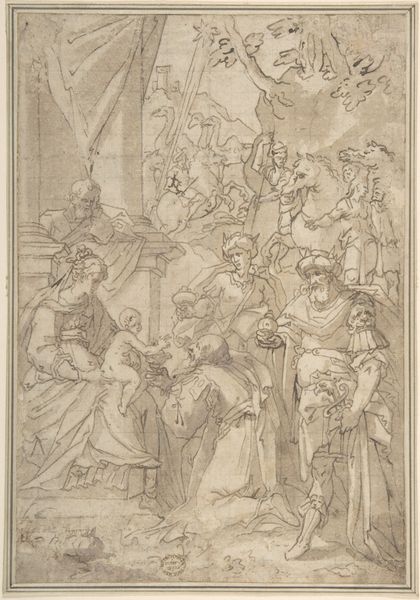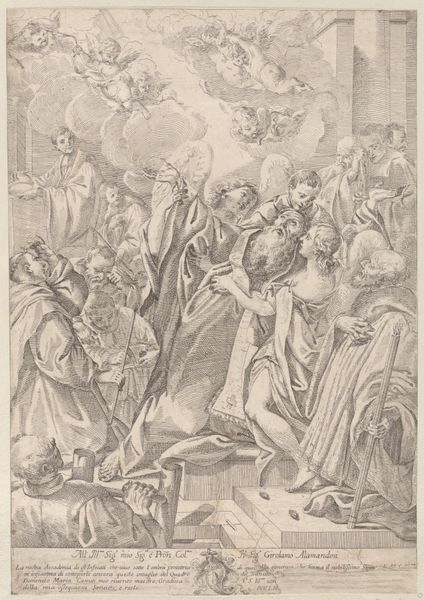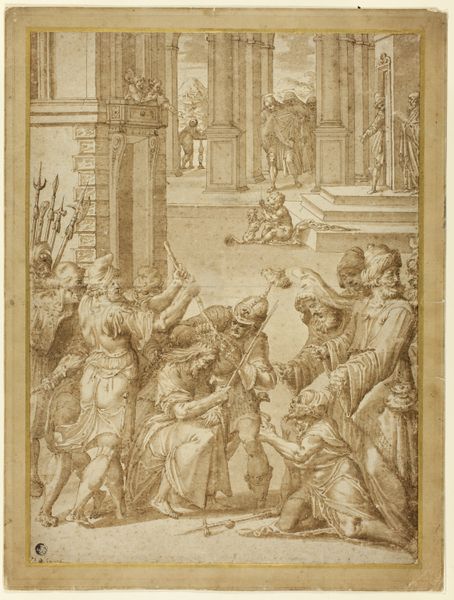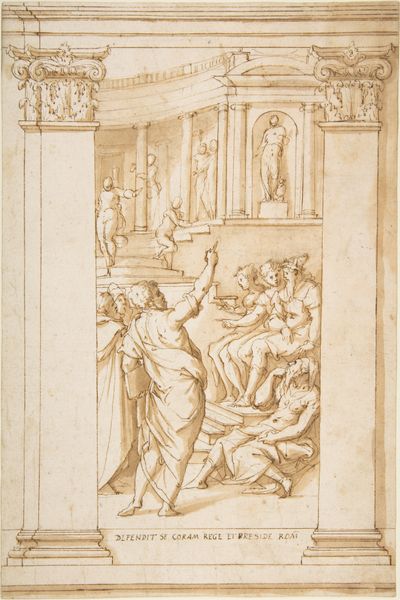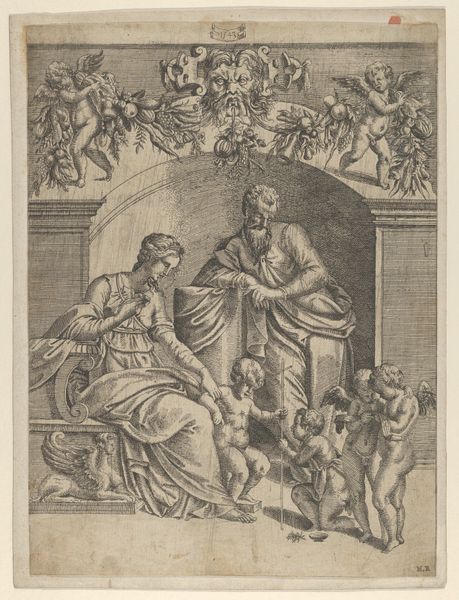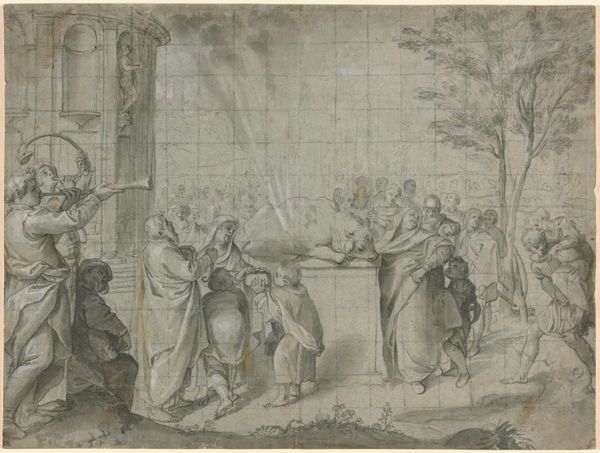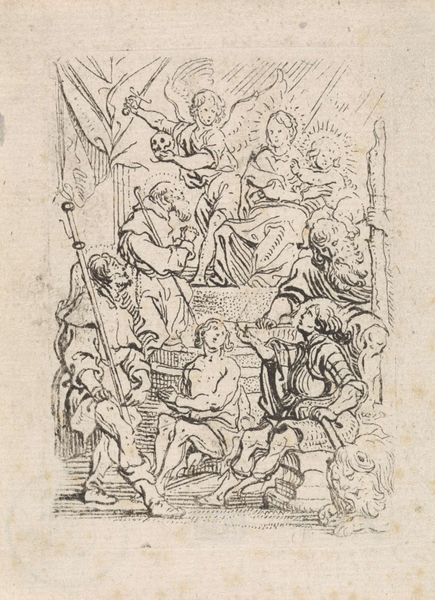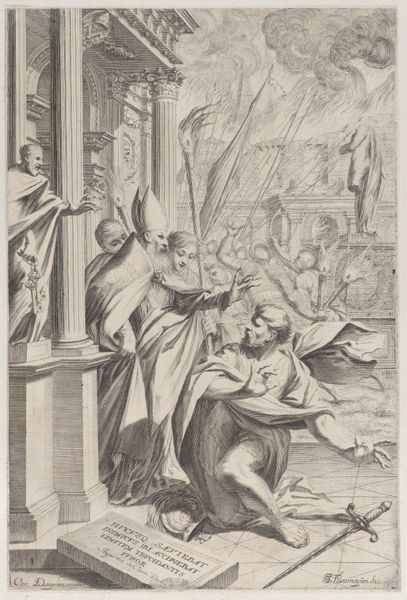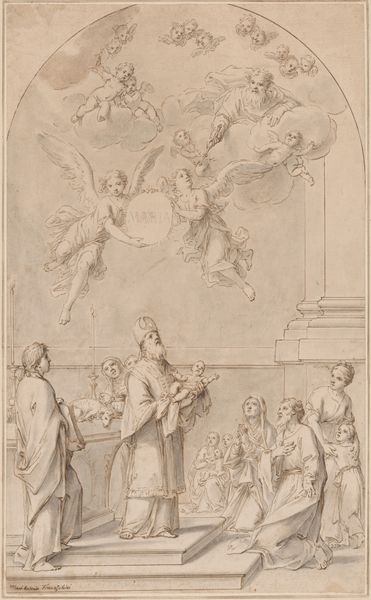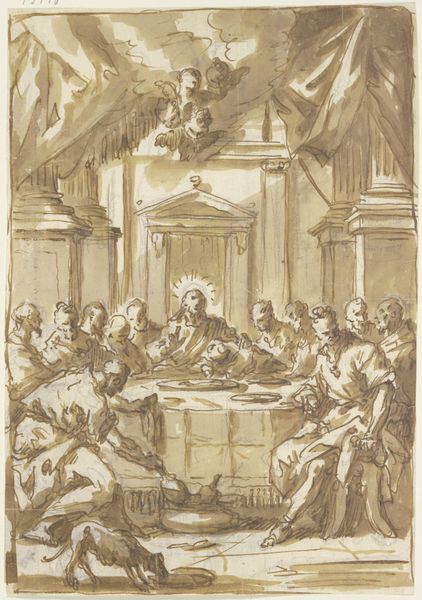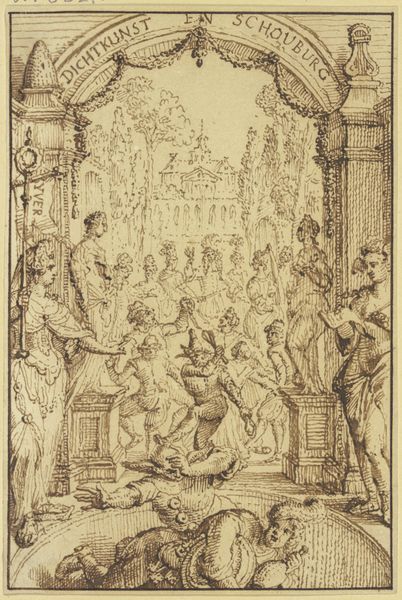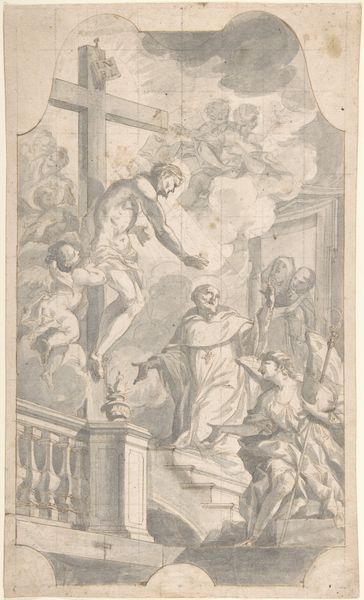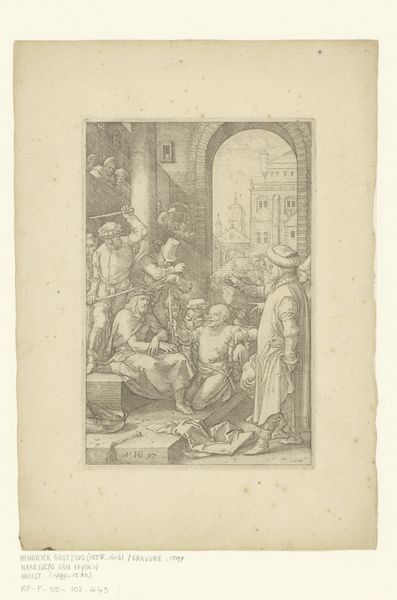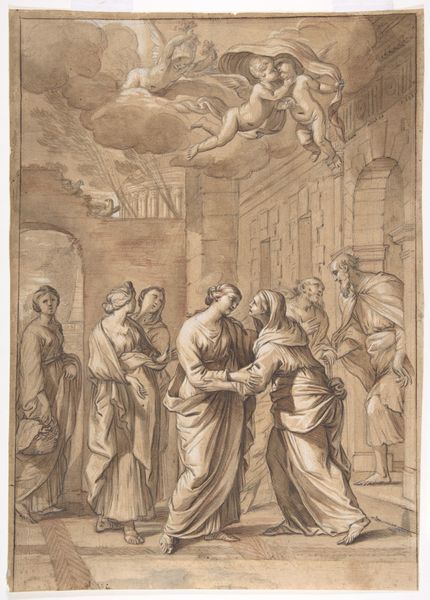
drawing, print, ink
#
drawing
#
baroque
# print
#
figuration
#
ink
#
history-painting
Dimensions: 20-7/8 x 12-5/16 in. (53.0 x 31.2 cm)
Copyright: Public Domain
Curator: Luigi Garzi’s ink drawing, “Saint Francis Renouncing His Worldly Goods,” dates from 1696 to 1697. Editor: It strikes me as a moment frozen in time. Everyone's a flurry of robes and gestures, all swirling around this incredibly serene central figure. It’s… strangely calm despite the commotion. Curator: Precisely. Note the architecture. Garzi uses the classic Baroque devices to organize the chaotic elements. The use of quadrature provides not just compositional depth but an implied reference to illusion and the sacred theater. Editor: Yes, and the angels hovering above! They seem so chubby and unbothered, like spectators in a grand performance. Makes you wonder what Francis is giving up that they already have—maybe the ability to really worry. Curator: One could examine the implied symbolism here: Saint Francis removing his clothes signifies divestiture, while the surrounding crowd of clerics gestures with varied intention, pointing toward a divergence of perspective in how to approach this seminal moment. Editor: They’re like us arguing about art! Some impressed, some skeptical, some just waiting for the coffee break. I wonder what was actually running through Francis’s head, though. Complete freedom, utter terror, or maybe just really itchy skin? Curator: We should consider how this is, in fact, an image intended to communicate a religious truth through a particular pictorial language. A system. To reduce Saint Francis’ feelings to "itchy skin" seems a somewhat unserious reading. Editor: Of course, of course. It’s just that behind all the visual rhetoric and the structured composition, there has to be the messy reality of a person making a really hard choice. This work still transmits this energy across time and I find it fascinating. Curator: I agree that the energy transmits strongly. Studying how Garzi’s employment of form and content communicates meaning opens access into not only the mind of the Baroque, but the nature of meaning itself. Editor: A total eclipse of possessions can have interesting results indeed!
Comments
No comments
Be the first to comment and join the conversation on the ultimate creative platform.
